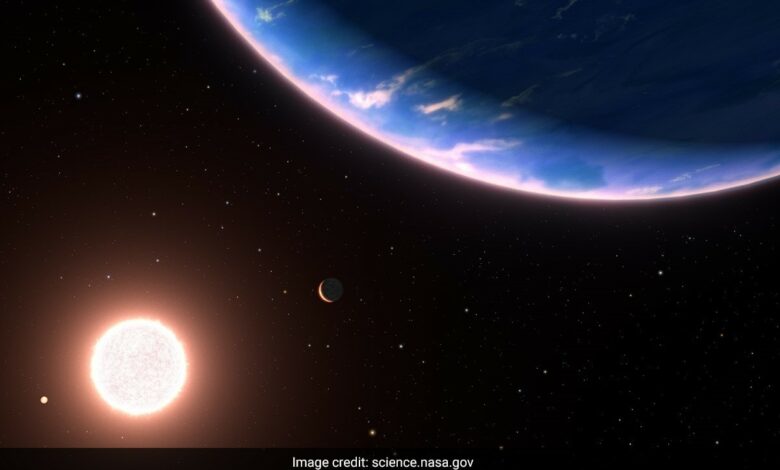Aqua Vapour Discovered On Sovereign Exoplanet Via NASA’s Hubble Telescope

The newly came upon exoplanet is as scorching as Venus, in step with NASA.
Unutilized Delhi:
In a leap forward, NASA astronomers have recognized the smallest exoplanet the usage of a Hubble Field Telescope the place H2O vapour has been detected within the shape. The planet GJ 9827d, at simplest roughly two times Earth’s diameter, may well be an instance of possible planets with water-rich atmospheres somewhere else in our galaxy.
The newly came upon exoplanet is as scorching as Venus, at 800 levels Fahrenheit, in step with NASA.
GJ 9827d used to be came upon by way of NASA’s Kepler Field Telescope in 2017 and it completes an orbit round a crimson dwarf megastar each 6.2 days. The megastar, GJ 9827, lies 97 shiny years from Earth within the constellation Pisces, in step with NASA.
“This would be the first time that we can directly show through atmospheric detection, that these planets with water-rich atmospheres can actually exist around other stars,” mentioned staff member Bjorn Benneke of the Trottier Institute for Analysis on Exoplanets on the College of Montreal.
“This is an important step toward determining the prevalence and diversity of atmospheres on rocky planets.”
“Until now, we had not been able to directly detect the atmosphere of such a small planet. And we’re slowly getting in this regime now,” added Benneke.
Giving insights about planet GJ 9827d, Benneke mentioned, “At present, the team is left with two possibilities. The planet is still clinging to a hydrogen-rich envelope laced with water, making it a mini-Neptune. Alternatively, it could be a warmer version of Jupiter’s moon Europa, which has twice as much water as Earth beneath its crust.
“The planet GJ 9827d may well be part H2O, part rock. And there can be a quantity of H2O vapour on lead of a few smaller rocky frame,” he said.
According to the space agency, the Hubble program has observed that the planet GJ 9827d during 11 transits were spaced out over a span of three years. During transits, starlight is filtered through the planet’s atmosphere and has the spectral fingerprint of water molecules, it said.
“Watching H2O is a gateway to discovering alternative issues,” mentioned Thomas Greene, an astrophysicist at NASA’s Ames Analysis Heart in California’s Silicon Valley.
The length company is now taken with finding the whole stock of a planet’s parts which may also be old to match to the megastar it orbits and perceive its formation.

